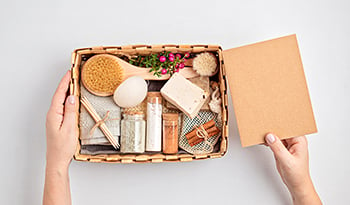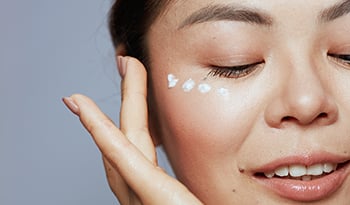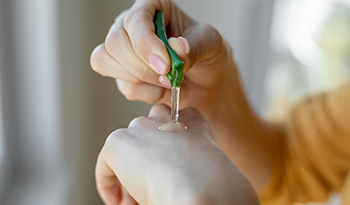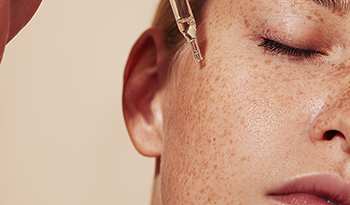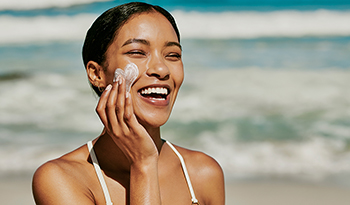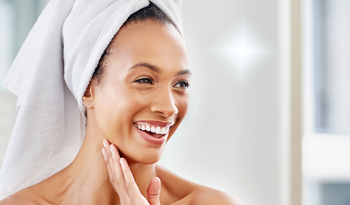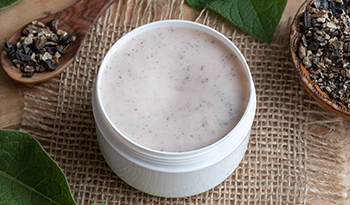9 Ingredients to Avoid in Your Bath and Beauty Products
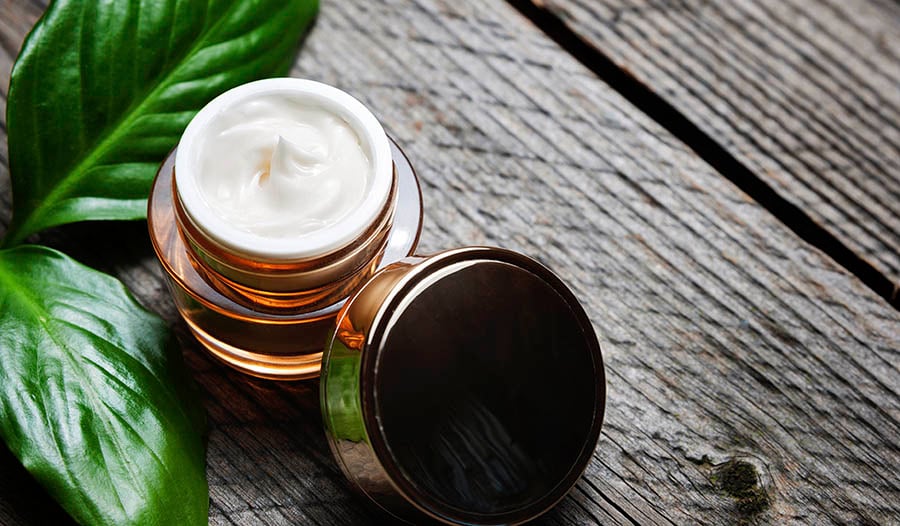
By Sarah Baker, CHN
The growing practice of checking labels on what we eat and put on our body is not going away anytime soon. As we are becoming more aware of how everything we put on our skin gets absorbed into our system, we are also becoming more aware of the potential dangers of many popular chemicals that are used in beauty products.
To help you navigate the clean beauty world, here’s a list of ingredients to avoid in your products. Keep an eye out for these chemicals and substances, and look for products that are sulfate-, paraben-, fragrance- and phthalate-free.
Fragrance
Did you know that companies are not legally forced to share the ingredients that make up a fragrance? Due to being confidential information or a trade secret, fragrance ingredients are usually omitted. Ingredients used in fragrances have been linked to respiratory issues, dermatitis, reproductive system issues and allergies. When possible, look for fragrance-free beauty options.
Phthalates
These types of ingredients, which are found in a good majority of perfumes (thus why they are popular in skincare fragrance) may be extremely disruptive to various systems in the body. Phthalates are found not only in perfume but also nail polish, baby toys (these types of toys are banned in California), lotions, hair sprays and all sorts of skincare products. Look for ingredients listed as dibutyl phthalate and diethyl phthalate. Phthalates have been shown to harm the female reproductive system and may even cause birth defects if used in large quantities.
Mineral Oil
Found in baby oil, gels and body moisturizers, mineral oil is a common preservative in skincare products as it helps capture moisture and prevents products from spoiling. It is considered a carcinogen—meaning that it has cancer-causing properties—and is a by-product of petroleum, which is used to create gasoline. Examine the ingredient lists on preservative-free products to avoid this substance.
Parabens
Another common preservative to prevent the growth of yeast or mold in products, parabens are found in makeup products like foundation, face and body wash, deodorant and lotions. Parabens can negatively impact hormone levels by disrupting estrogen levels, which could potentially lead to health complications in women. Look for ingredients labeled as isopropyl, isobutyl, or ingredients with the suffix -paraben and shop for products labeled paraben-free.
Triclosan
Acting as a hormone-disrupting ingredient, triclosan is found in toothpaste, hand sanitizers, makeup products and deodorant. It may also harm the immune system and even how our muscles work. Triclosan could even assist with the creation of antibiotic-resistant germs.
Oxybenzone
This harmful ingredient also acts like estrogen when absorbed into the body and could contribute towards endometriosis. It’s an extremely common ingredient in many sunscreens, so look for chemical-free alternatives instead that contain only titanium oxide and zinc oxide.
Formaldehyde
This type of preservative prevents the growth of bacteria and is also known as a carcinogen. Many people show an allergic reaction to it when used and it is found in a slew of beauty products like nail polish, shampoo and conditioner, eyeshadow and body wash.
Sodium Lauryl Sulfate
This type of sulfate can cause eye damage, canker sores, hormonal acne and skin irritations, and is found in toothpaste, mouthwash, foundation, body and face wash and shampoo. It is an ingredient that creates the “foam” in many products and acts as a surfactant. Look for SLS-free options labeled on the packing of products.
Hydroquinone
This type of harmful ingredient is used in many various hyperpigmentation serums and creams. Hydroquinone is a brightening product that acts as an artificial skin lightener that reduces melanin in your skin. It’s also considered a carcinogen and neurotoxin and has also been associated with allergies.
So next time you hit up the skincare aisle while you’re shopping, be mindful of the types of ingredients that you’ll find on the label and always opt for products that tout being paraben, sulfate, and fragrance-free.
ANSVARSFRISKRIVNING:Denna Wellness Hub avser inte att tillhandahålla diagnos ...













































































 Innehållsförteckning
Innehållsförteckning



